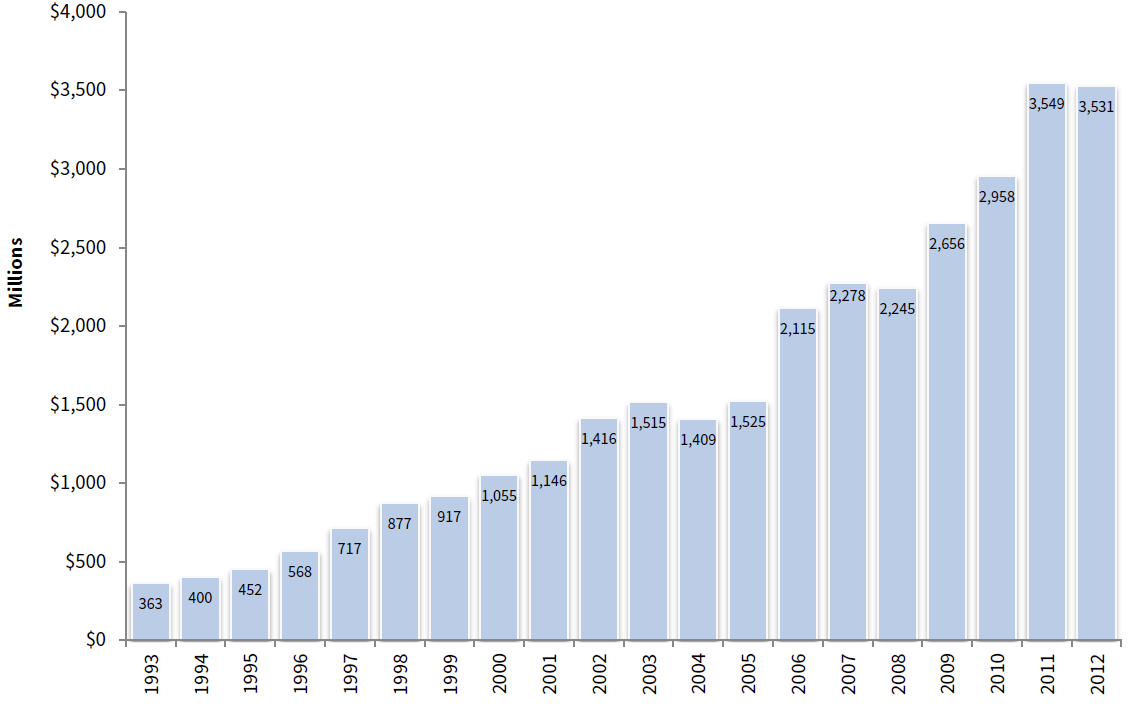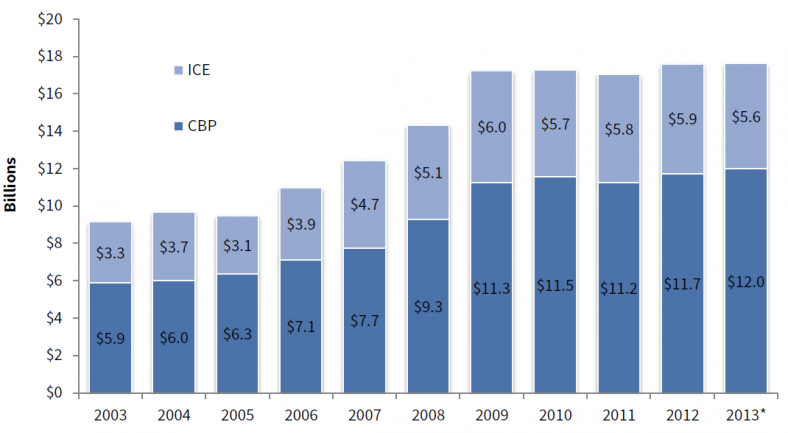- Fact Sheet
The Fallacy of "Enforcement First"
Immigration Enforcement Without Immigration Reform Has Been Failing for Decades
Published
Opponents of a new legalization program for unauthorized immigrants living and working in the United States frequently claim that we must try “enforcement first.” That is to say, we must adequately enforce the laws on the books before we can contemplate the formulation of more reasonable laws. This stance is nonsensical for two reasons. First of all, it ignores the fact that the unworkable nature of our immigration laws is itself facilitating unauthorized immigration; so it is illogical to hope that stronger enforcement of those unworkable laws will somehow lessen unauthorized immigration. Secondly, the “enforcement first” perspective conveniently overlooks the fact that the United States has been pursuing an “enforcement first” approach to immigration control for more than two-and-a-half decades—and it has yet to work.
Since the last major legalization program for unauthorized immigrants in 1986, the federal government has spent an estimated $186.8 billion on immigration enforcement. Yet during that time, the unauthorized population has tripled in size to 11 million. This did not occur because $186.6 billion was not enough to get the job done. It occurred because this money was spent trying to enforce immigration laws that have consistently failed to match either the U.S. economy’s demand for workers or the natural desire of immigrants to be reunited with their families. As a result, we keep throwing good money after bad, ignoring the old adage that “insanity” is doing the same thing over and over again and expecting different results. More concretely, the federal government has met nearly every “metric” for border security that appeared in the 2006, 2007, and 2010 immigration-reform bills in the Senate, yet new metrics are continually created to replace the old ones, and the finish line keeps moving further away. The “enforcement first” approach to unauthorized immigration would more accurately be called “enforcement forever,” because there is no end in sight.
The U.S. Border Patrol budget has increased nearly 10-fold since 1993.
- Since 1993, when the current strategy of concentrated border enforcement was first rolled out along the U.S.-Mexico border, the annual budget of the U.S. Border Patrol has increased from $363 million to more than $3.5 billion {Figure 1}.
Figure 1: U.S. Border Patrol Budget, FY 1993-2010

Fiscal Year
Source: U.S. Border Patrol, "Enacted Border Patrol Program Budget by Fiscal Year," February 2013.
Since 2003, the budget of U.S. Customs and Border Protection (CBP) has doubled, while the budget of Immigration and Customs Enforcement (ICE) has increased by 73 percent.
- Since the creation of the Department of Homeland Security (DHS) in 2003, the budget of U.S. Customs and Border Protection (CBP)—the parent agency of the Border Patrol within DHS—has increased from $5.9 billion to $12 billion per year {Figure 2}.
- On top of that, spending on U.S. Immigration and Customs Enforcement (ICE), the interior-enforcement counterpart to CBP within DHS, has grown from $3.3 billion since its inception to $5.6 billion today {Figure 2}.
Figure 2: CBP & ICE Annual Budgets, FY 2003-2013

Fiscal Year
Source: U.S. Department of Homeland Security, Budget-in-Brief, FY 2005-2013.
*Proposed in President's Budget.
The number of border and interior enforcement personnel now stands at more than 49,000.
- The number of Border Patrol agents doubled from 10,717 in FY 2003 to 21,394 in FY 2012 {Figure 3}.
- The number of CBP officers staffing ports of entry (POEs) grew from 17,279 in FY 2003 to 21,423 in FY 2012 {Figure 3}.
- The number of ICE agents devoted to Enforcement and Removal Operations increased from 2,710 in FY 2003 to 6,338 in FY 2012 {Figure 3}.
Figure 3: CBP Officers, Border Patrol Agents, and ICE Agents, FY 2003-2012

Fiscal Year
Source: See endnotes 8, 9, and 10.
* Includes only ERO Officers.
The federal government has already met the border-security benchmarks laid down in the immigration-reform bills introduced in the Senate since 2006.
- As the American Immigration Lawyers Association points out in a January 2013 analysis, the “benchmarks” for border security specified in the 2006, 2007, and 2010 immigration-reform bills in the Senate have been largely met.
- The requirements in the bills for more border-enforcement personnel, border fencing, surveillance technology, unmanned aerial vehicles, and detention beds have been fulfilled.
“Enforcement first” has been the law of the land for decades.
- As the Migration Policy Institute concluded in a comprehensive report in January 2013:
“…a philosophy known as ‘enforcement first’ has become de facto the nation’s singular response to illegal immigration, and changes to the immigration system have focused almost entirely on building enforcement programs and improving their performance. Enforcement-first proponents argue that effective immigration enforcement should be a precondition for addressing broader reform and policy needs. In fact, the nation’s strong, pro-enforcement consensus has resulted in the creation of a well-resourced, operationally robust, modernized enforcement system…”
Conclusion
“Enforcement first” is just more of the same; more of the same enforcement-without-reform approach to unauthorized immigration that has consistently failed to work for 27 years and counting. Trying to enforce a dysfunctional immigration system as a prerequisite for reforming that system is a fool’s errand. Immigration reform that includes a pathway to legal status for unauthorized immigrants already living in the country, coupled with the creation of flexible avenues for future immigration, would enhance border security and help bring unauthorized immigration under control. Enforcement with reform is the only effective way to repair a broken immigration system.
Help us fight for immigration justice!
The research is clear – immigrants are more likely to win their cases with a lawyer by their side. But very few can get attorneys.
Introducing the Immigration Justice Campaign Access Fund.
Your support sends attorneys, provides interpreters, and delivers justice.

Immigration Justice Campaign is an initiative of American Immigration Council and American Immigration Lawyers Association. The mission is to increase free legal services for immigrants navigating our complicated immigration system and leverage the voices and experiences of those most directly impacted by our country’s immigration policies to inform legal and advocacy strategies. We bring together a broad network of volunteers who provide legal assistance and advocate for due process for immigrants with a humane approach that includes universal legal representation and other community-based support for individuals during their immigration cases.

